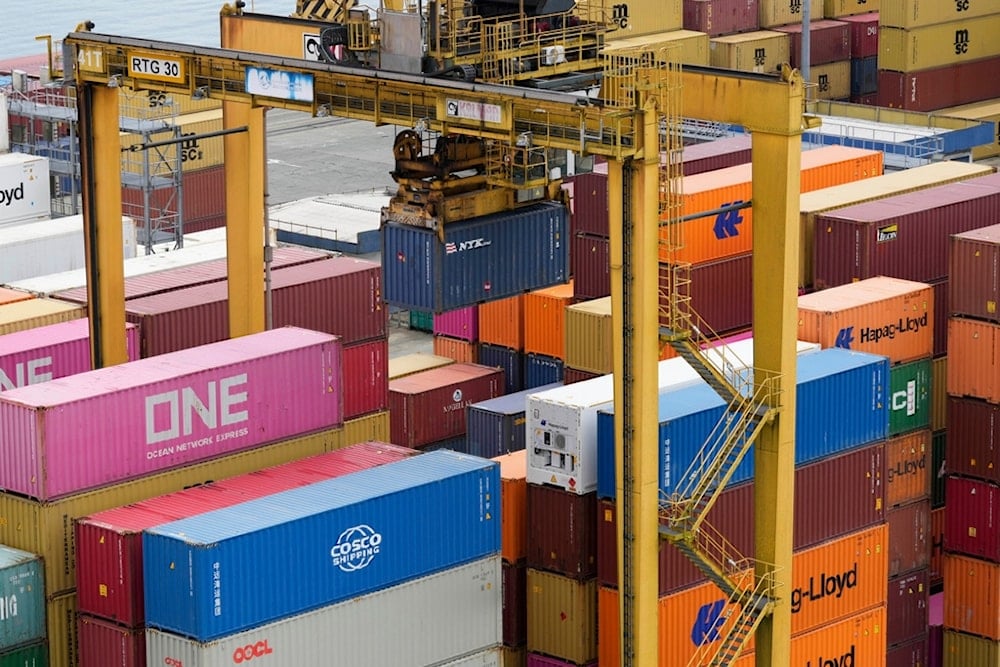White House mulls tariff rollback to ease China trade tensions: WSJ
The deliberations coincide with mounting criticism from the business community, which is grappling with soaring import costs, rising inflation, and strained supply networks.
-

Cranes unload containers from a cargo ship at the seaport in Buenaventura on Colombia's Pacific coast, Wednesday, April 9, 2025 (AP Photo/Fernando Vergara)
The Trump administration is reportedly exploring options to reduce tariffs on Chinese imports in an attempt to cool down the prolonged trade dispute with Beijing, according to The Wall Street Journal, which cited individuals familiar with the matter.
While no definitive move has been made, officials are said to be evaluating a significant tariff cut, possibly scaling back duties to somewhere between 50% and 65%. These proposed reductions aim to relieve some of the economic strain brought on by the escalating tariff war. President Trump has publicly acknowledged that the current 145% rate is excessive, stating, "145 percent is very high and it won't be that high," signaling a likely shift in direction.
In parallel, the administration is also considering a tiered tariff framework. Under this model, goods assessed as non-threatening to national security could be subject to a 35% tariff, while products categorized as strategically vital may still face tariffs of at least 100%. The proposed structure aims to balance national security imperatives with the need to alleviate pressure on industries dependent on foreign supply chains.
Tariff Retreat
The deliberations coincide with mounting criticism from the business community, which is grappling with soaring import costs, rising inflation, and strained supply networks. Earlier in April, the White House imposed a universal 10% tariff on all imports, with additional reciprocal duties reaching up to 245% on nations with major trade surpluses, notably China. This sweeping measure, part of what the administration termed "Liberation Day," was met with swift retaliation from Beijing and raised alarms over a potential collapse in bilateral trade.
Facing pushback from key industries, especially the tech sector, the Trump administration has already begun scaling back some of its more aggressive measures. On April 12, it announced that a wide range of electronics, including smartphones, laptops, and semiconductors, would be exempted from the new tariffs. These categories, primarily manufactured in China, are critical to the US consumer market and technology infrastructure. The exemptions, which were made retroactive to April 5, underscore the administration's quiet recognition that a blanket tariff policy may be economically unsustainable.
Read more: 'Mr. Too Late must cut rates': Trump escalates Fed criticism
Public discontent is also intensifying. A recent Reuters/Ipsos poll found that only 37% of Americans approve of President Trump's economic management, with fears of a looming recession on the rise. Industry experts and trade analysts suggest the proposed tariff adjustments are a calculated move to restore investor confidence and signal to international partners that the US is willing to recalibrate its approach.
Although the administration continues to justify tariffs as a tool for rebalancing trade and countering strategic threats, the exemptions and potential cuts reveal a more complex reality: one where economic interdependence, particularly in high-tech manufacturing, limits Washington's room for maneuver. As the US navigates this next phase of trade policy, officials appear increasingly aware that economic stability may hinge on finding a middle ground between confrontation and cooperation.

 3 Min Read
3 Min Read








